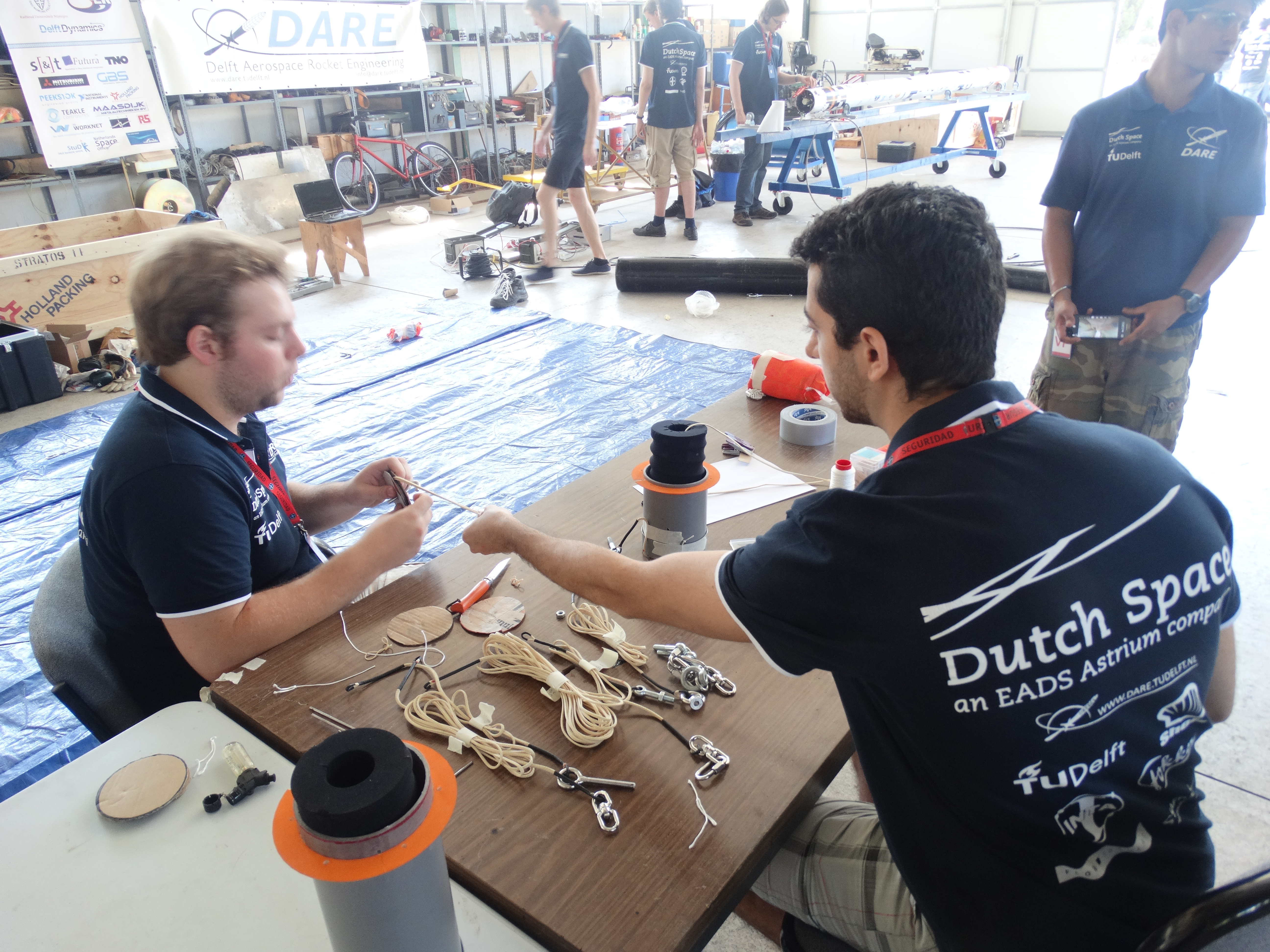
The Stratos II Team is getting excited with only 2 days to go until launch. The weather at the launch site INTA located near Huelva in Spain is looking very promising. The temperature is not too hot in the morning, which is essential for the launch. The rocket motor stays cool. That is why we have decided to launch in the morning. Write it down in your agenda! The launch is now planned for the 1st of October at roughly 11:00 CEST (Central European Summer Time). This is the local time in both Spain and The Netherlands. In case you still want to receive a notification text message (SMS) or email, you can sign up at: dare.tudelft.nl/stratos-ii
The day started off with the hybrid propulsion team testing their feed system, by applying pressured gas through it. This created quite some noise in the workshop area. The pressured gas that was used is pure nitrogen gas. By applying the nitrogen gas, the feed system is not only tested for correct performance, but also the feed system is cleansed from remaining chemicals which could cause failures of the feed system. The feed system is used to supply the fuel, consisting of a mixture of sorbitol, aluminium powder and paraffin, with the oxidizer which will consist of nitrous oxide (in the chemical engineering world also called laughing gas). The mixture of this fuel and oxidizer in the combustion chamber will create the thrust needed to reach 50 km altitude.
Parallel to the activity of the hybdrid propulsion team, the recovery team assembled their parachute. This required some delicate folding and wrapping of the parachute. The method of folding, wrapping and placement of the wires that the team uses has proven to be a reliable parachute system. This is the same method as used on other parachute systems for re-entry vehicles. Since all of the folding is done manually to ensure that everything is done correctly, this activity took quite some time. In the mean time the capsule team was getting anxious to receive the parachute system to place it inside the rocket.
Today the capsule team has been mainly busy with integrating the payload from the Radboud University of Nijmegen. For a full article on the functions of this payload check out: http://www.astronomie.nl/#!/actueel/nieuws/_detail/gli/lancering-opmaat-voor-radiotelescoop-op-de-maan-me/. Another activity of the capsule team today was sealing off the bag containing the biodegradable fluorescent substance and placing it inside the capsule. This substance will turn the surface of the water into a fluorescent green color. With the sea surface turning green in a small area, the location of the landing of the rocket will be more visible from the helicopter and the ship during the recovery phase.







